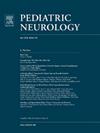Effect of Propofol and Sevoflurane on Vanishing White Matter Models
IF 3.2
3区 医学
Q2 CLINICAL NEUROLOGY
引用次数: 0
Abstract
Background
The leukodystrophy vanishing white matter (VWM) most often has its onset in childhood and is characterized by chronic decline and additionally stress-provoked acute neurological deterioration. Anesthesia is a stressor that can trigger this acute decline. The commonly used inhalational anesthetic sevoflurane has been reported to activate the integrated stress response (ISR), whereas the intravenous anesthetic propofol has not. We aimed to assess the differential effects of these anesthetics in models of VWM.
Methods
We investigated the molecular effects of sevoflurane and propofol on the ISR in a murine neural cell line and in cultured astrocytes from patients with VWM and control subjects with immunostainings for prototypic ISR marker activating transcription factor 4 (ATF4). We determined the effects of these anesthetics on clinical signs and expression of ISR mRNAs in VWM and wild-type mice.
Results
In the murine cell line, sevoflurane increased ATF4 accumulation compared with its vehicle (+157%); in contrast, propofol's vehicle without (−22%) and with (−23%) propofol decreased tunicamycin-increased levels of ATF4 to similar degree. Sevoflurane activated the ISR in astrocytes from control subjects (+17-33%) but not from patients with VWM (+1-2%). Propofol and its vehicle did not impact the ISR in astrocytes. The anesthetics did not have prolonged effects on motor skills in VWM mice but had small differential effects on ISR mRNA levels, consistently higher with sevoflurane than with propofol.
Conclusions
We observed differential effects of the anesthetics in cultured neural cells and on expression levels of ISR markers in VWM mice, but not on clinical signs in VWM mice.
异丙酚和七氟醚对脑白质消失模型的影响
白质消失性脑白质营养不良(VWM)最常发生在儿童时期,其特征是慢性衰退和应激引起的急性神经退化。麻醉是一种压力源,可以引发这种急性衰退。据报道,常用的吸入麻醉剂七氟醚可激活综合应激反应(ISR),而静脉麻醉剂异丙酚则没有。我们的目的是评估这些麻醉药在VWM模型中的不同作用。方法用免疫染色方法观察七氟醚和异丙酚对小鼠神经细胞系和VWM患者星形胶质细胞ISR的影响,并对其进行原型ISR标志物激活转录因子4 (ATF4)的免疫染色。我们测定了这些麻醉药对VWM和野生型小鼠临床体征和ISR mrna表达的影响。结果在小鼠细胞系中,七氟醚使ATF4积累量较对照增加了157%;相比之下,不含丙泊酚(- 22%)和含丙泊酚(- 23%)的异丙酚载具在相似程度上降低了tunicamycin-增加ATF4的水平。七氟醚激活了对照组星形胶质细胞的ISR(+17-33%),而VWM患者的ISR没有激活(+1-2%)。异丙酚及其载体对星形胶质细胞的ISR无影响。麻醉剂对VWM小鼠的运动技能没有持久的影响,但对ISR mRNA水平的影响差异很小,七氟醚的影响始终高于异丙酚。结论麻醉药对VWM小鼠培养的神经细胞和ISR标记物的表达水平有不同的影响,但对VWM小鼠的临床症状没有影响。
本文章由计算机程序翻译,如有差异,请以英文原文为准。
求助全文
约1分钟内获得全文
求助全文
来源期刊

Pediatric neurology
医学-临床神经学
CiteScore
4.80
自引率
2.60%
发文量
176
审稿时长
78 days
期刊介绍:
Pediatric Neurology publishes timely peer-reviewed clinical and research articles covering all aspects of the developing nervous system.
Pediatric Neurology features up-to-the-minute publication of the latest advances in the diagnosis, management, and treatment of pediatric neurologic disorders. The journal''s editor, E. Steve Roach, in conjunction with the team of Associate Editors, heads an internationally recognized editorial board, ensuring the most authoritative and extensive coverage of the field. Among the topics covered are: epilepsy, mitochondrial diseases, congenital malformations, chromosomopathies, peripheral neuropathies, perinatal and childhood stroke, cerebral palsy, as well as other diseases affecting the developing nervous system.
 求助内容:
求助内容: 应助结果提醒方式:
应助结果提醒方式:


